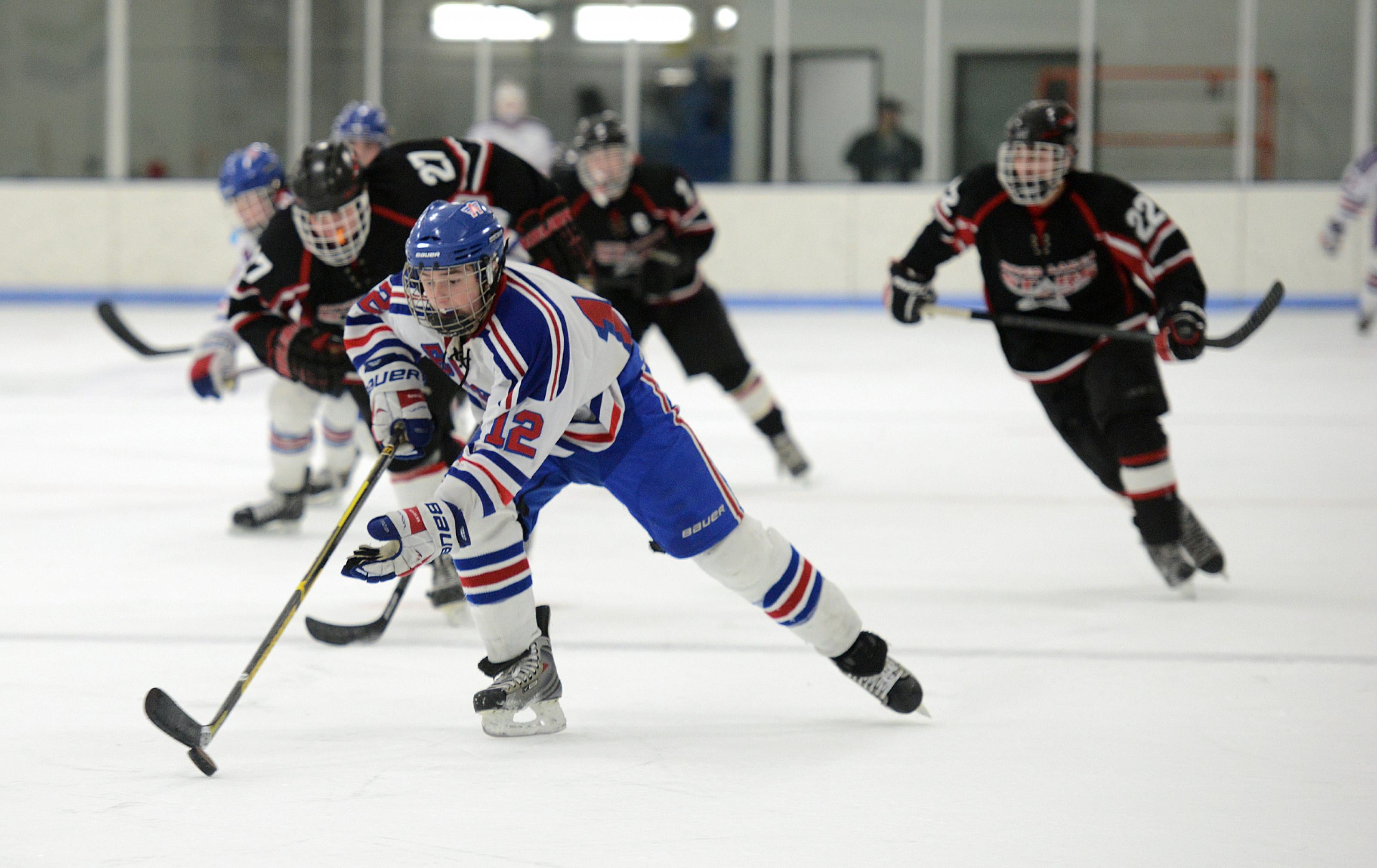There’s no better feeling for a hockey player than when you split the defense and head off to the races on a breakaway. Players on the bench stand up, and everyone in the rink takes a deep breath to see who’s going to win the battle: player vs tendie!
The most common breakaway opportunities happen when a pass is picked off in the neutral zone, when a shot is blocked near the defensive blue line, or when a player gets behind the defensemen near the offensive blue line and receives a pass.
Regardless of how you end up in this thrilling situation, it is best to anticipate the following five factors ahead of time and practice how you would respond at home so that you are ready to score when it matters:
- Identify how much time you have before a backchecking opponent reaches you. If your time is limited, then you should be protecting the puck with your body and attempting to fire off a quality shot on goal.
- If you have ample time to dictate your shot, then peek at the goalie. Is he/she coming out to challenge you, or deep in the net waiting for you to arrive? If the goalie is out challenging, then it is time to make a hockey breakaway move. If the goalie is deep in the net, this is a signal that it is best if you shoot.
- Whether to shoot or make a hockey move also comes down to how quick, accurate and strong your shot is. Depending on your level of play, can you overpower the goalie with a rapid release and outmatch their reflexes? Do goalies at your level struggle with high shots while you know you can go bar down every time? Or do you struggle to shoot hard while on the move and know you’re better off getting the goalie going side to side and trying a low shot or five hole? You are the only one who can answer that question, but if you have practiced enough, I will bet on you!
- During practices and off-ice training, you should work to develop hockey moves that you can execute consistently in a breakaway situation. My suggestion is to develop three separate faking moves, and practice each from three different points of attack (e.g. right side, center, left side). Then when opportunity presents itself, you now have an arsenal of moves to pull from and you can let your muscle memory take over.
- The last factor to consider is ice conditions. If it is late in the game and the ice is chewed up, you want to go with a shot. Although if it is early in the game with fresh ice, then a move, fake or deke is an option to consider.
If you anticipate these factors ahead of time and practice your move and shots repeatedly at home and during on-ice practice, then the next time you find yourself alone and staring down the goalie, you will be stress-free and ready tickle the twine.
Edited in May 2024, from an original blog written by Lance Pitlick in 2019. Based in the Minneapolis area, Lance is a former NHL player with Ottawa Senators and Florida Panthers, played collegiate hockey with the Minnesota Golden Gophers, is a foremost training professional with stickhandling and shooting both in-person and through onlinehockeytraining.com, and is the founder and former owner of Snipers Edge Hockey.


